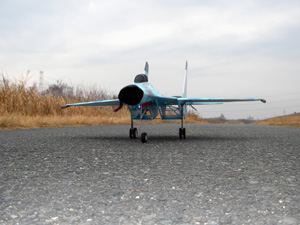
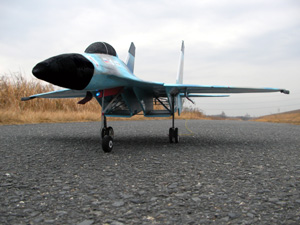
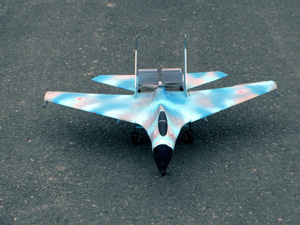
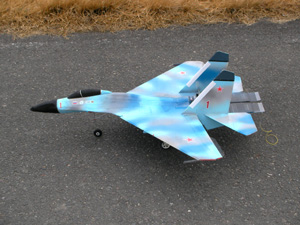
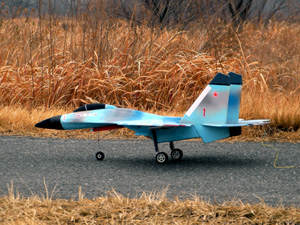
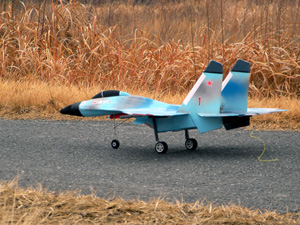
| 1/16 Su-35 BM (January 2009) |
| This is an 1/16 model of the Su-35 BM . Specifications - Airframe>> Wingspan: 92 cm, Weight: 780g, Control>> 3 channel RC - throttle and elevons; Powerplant>> Hyperion HP-P1919-06 brushless motor, Propellers: 7x5 and 7x6 (two stages), Battery: 3 Cells Li-Po 11.1V 2200mA.h, Static thrust-to-weight ratio: about 1; |


|


|


|
Video of RC Su-35BM performing cobra, kulbit, split s, and tail slide.
| Biologically-inspired Short Takeoff and Landing (STOL) RC Plane FBIT.01 (June 2008) |
|
The plane is designed with the intention to verify the feasibility of bird-like landing with near zero horizontal velocity.
Similarly to the vertical takeoff and landing (VTOL) planes it would be able to land on a spot and would not need a runway.
In contrast to the VTOL planes however, on landing FBIT.01 would rely purely on aerodynamic forces
generated by the morphing airframe rather than powerful thrust of the motor. Some images of the plane and computer graphics illustrating the morphing of the airframe are shown below. |
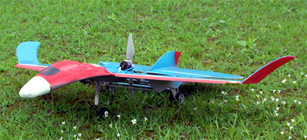
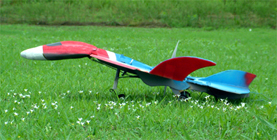
|
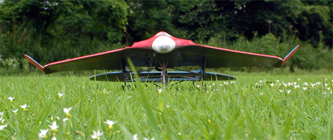
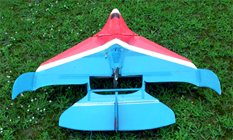
|

|
| 1/20 Su-30 (May 2008) |
| This is an 1/20 model of the Su-30 Flanker-C with TVC. Specifications - Airframe>> Scale: 1/20, Wingspan: 74 cm, Weight: 340g, Control>> 3 channel RC - throttle and elevons; Powerplant>> Hyperion HP-Z2205-34 brushless motor, Propeller: 6.5x5, Battery: 3 Cells Li-Po 11.1V 910mA.h, Static thrust-to-weight ratio: about 1; |
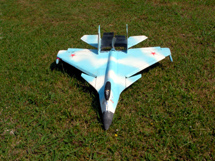
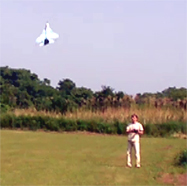
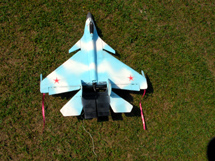
|
| Snapshots of RC Su-30 performing a variation of tail slide ( Kvochur's Bell) and Cobra turn are shown below. |
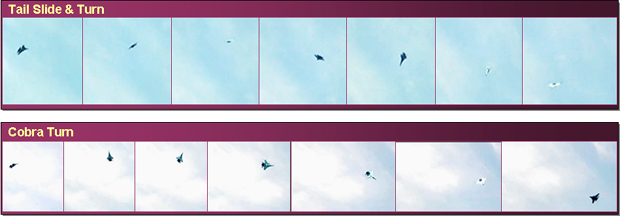
|
You may watch the 1/20 RC Su-30 at YouTube:
| 1/25 Su-30 (June 2007) |
| Another RC plane which I built from scratch is this model of Sukhoi Su-30 "Flanker-C" (airshow video). The specifications of the plane are as follows. Airframe: Scale: 1/25, Wingspan: 60 cm, Weight: 282g, Wingload: 30g/sq.dm; Control: 3 channels RC - throttle and elevons; Powerplant: Motor: Brushless Himax HC2208-1260, Max power: 30W, Propeller: 5.5x4.5, Battery: 3 Cells Li-Po 11.1V 710mA.h, Static thrust-to-weight ratio: about 0.9; |
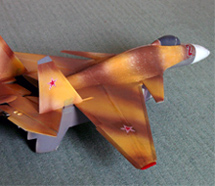
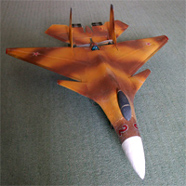
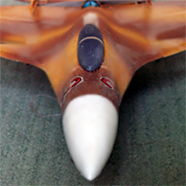
|
| A simple thrust vectoring is achieved by placing the propeller immediately in front of elevons. This renders the elevons effective (as long as the propeller spins and creates a slipstream) regardless of the angle of attack and velocity of the plane. Also, in this configuration the torque reaction is virtually cancelled within the whole range of the output of the motor. |
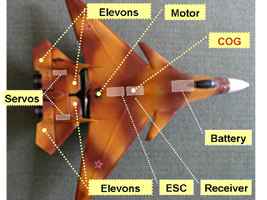
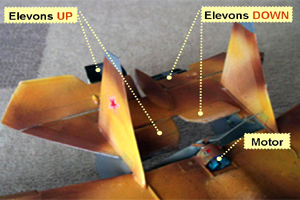
|
| The plane is very maneuverable, and easy to control in a wide range of velocity and angle of attack. It seems to be one of the first ever RC models of Flanker able to perform Pugachev's cobra. Snapshots of RC Su-30 performing Kulbit and Cobra are shown below. |


|
Please watch the movie clip (MPEG1, 11.6MB) of RC Su-30 performing kulbit, high AOA, sharp turn, stall turn, free fall, "falling leaf", and Pugachev's cobra.
You may also download the whole high-resolution movie (MPEG2, 155MB) of RC Su-30 flying or, alternatively
watch it at YouTube:
| 1/72 Su-27 (February 2007) |
| This plane is inspired by Sukhoi Su-27 Flanker . Similarly to its bigger counterpart, this RC plane is easy to control and features quite a wide flying envelop. The scale is 1/72, and with wingspan of about 19cm and weight of 21g this is one of the smallest ever RC Flankers. I built the airframe from scratch, and used off-the-shelf electrical motors and RC-electronics. |
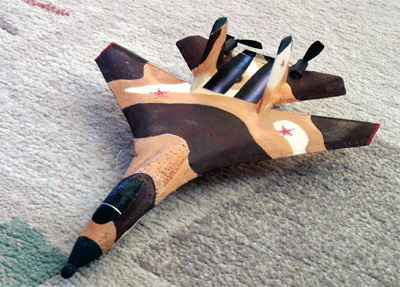
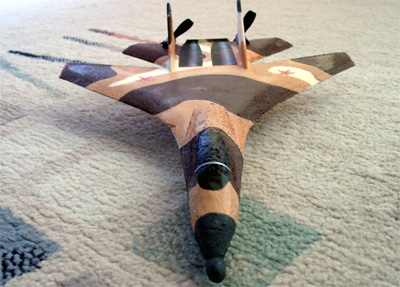
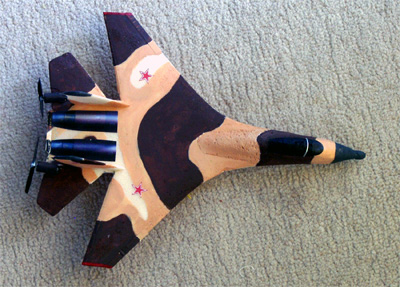
|
Watch it flying at YouTube:
| 1/36 Su-27 (April 2007) |
|
This RC Flanker retired after a crash during the test flight with the center of gravity intentionally set aft.
Initiating a climb for a loop, the plane suddenly and uncontrollably increased the angle of attack, stalled, and
entered a spin from which it couldn't recover.
Crashing heavily, the plane was damaged beyond repair.
The pilot ejected at very low altitude. Thanks to the K-36 ejection seat with its zero-zero capabilities, he survived the crash and suffered only a mild frustration. It took a while to recover his airworthness and proceed with the maiden flight and then - with the test flights of the 1/25 RC Su-30 (shown above). |
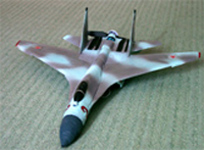
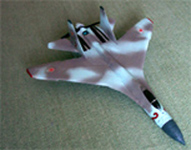
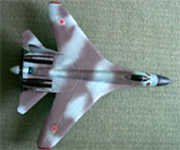
|
>> Back to the main page of Ivan Tanev